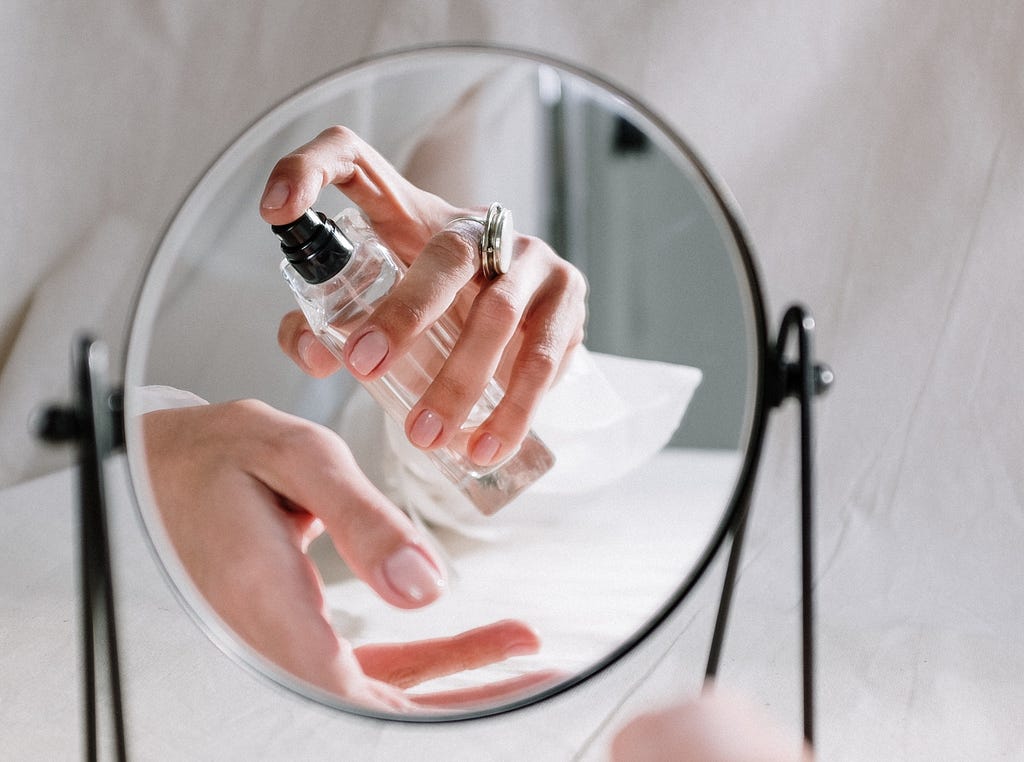
When people first use our app, they tend to be shocked when they look up their go-to products and find that many are rated an 8 in our system. Unfortunately, scoring an 8 in the Think Dirty book means that the ingredients can carry potentially serious negative long-term health effects. A lot of the time, this rating is largely due to the ingredient known as Fragrance or Parfum. The vast majority of personal care products, especially ones from brands owned by large corporations, contain some form of Synthetic Fragrance. We’ve become so accustomed to heavily scented skin, body, hair, and even children’s products, that no one really questions what exactly comprises a product’s scent.
“Fragrance” or “Parfum” on an ingredient list is not technically an individual ingredient or chemical but rather an umbrella term that refers to all the compounds and chemicals that comprise a product’s fragrance. Typically this is dozens of ingredients. Companies are not required to disclose the individual fragrance elements as the fragrance “blend” is considered proprietary information.
The International Fragrance Association (IFRA) is the self-regulating global representative body of the fragrance industry, meaning they set their own safety standards and regulations. In a small effort toward transparency, their website has a comprehensive list of over 3000 ingredients used as fragrance compounds. However, many of these chemicals lack substantial research and safety data, and some have been associated with serious negative health effects. For example, Styrene, deemed a probable human carcinogen by the National Toxicology Program and International Agency for Research on Cancer, resides comfortably on the list with no restrictions. Phthalates, commonly found in fragrance, are also known endocrine disruptors with the potential to cause reproductive harm.
Aside from the lack of transparency regarding safety, Fragrance is one of the main causes of contact allergic reactions caused by the use of personal care products, in children as well as adults. Because specific fragrance information is hidden, there is no way to tell which specific chemical or compound is the cause of an allergic reaction. This often leads those with sensitive skin or allergy concerns no other choice than to seek out unscented skincare products. This is also of particular concern for infants, as their skin barrier is still developing and is more sensitive to barrier disruption than that of an adult.
Most personal care brands do not have a clear statement regarding their fragrance formulations. This has been the longtime common practice in the industry. The clean beauty wave, however, has placed increased pressure on beauty companies to be more transparent regarding their ingredients.
If you’re concerned about the ingredients hiding in your products, don’t stress yourself out. There are many beauty brands to choose from that do not use Fragrance and disclose every aspect of their product’s ingredients. Our Verified Brands section is a good start, as we have independently vetted each brand’s ingredient lists. If you want to steer clear of the whole situation, there are also lots of unscented beauty products out there that will do the trick. Check out the Scent Free Skincare category on our app for starters.
Ingredient Breakdown: Fragrance was originally published in Think Dirty on Medium, where people are continuing the conversation by highlighting and responding to this story.